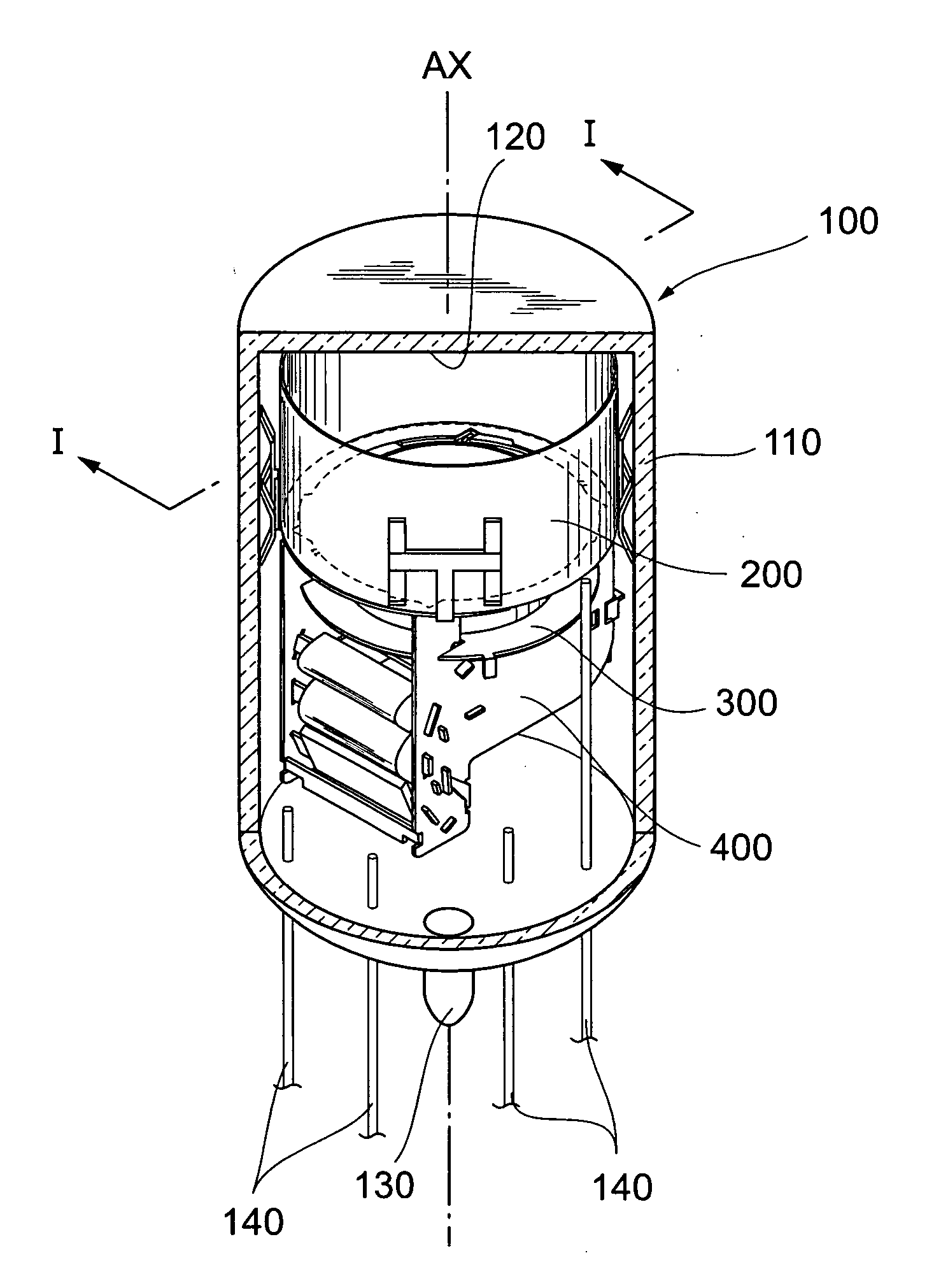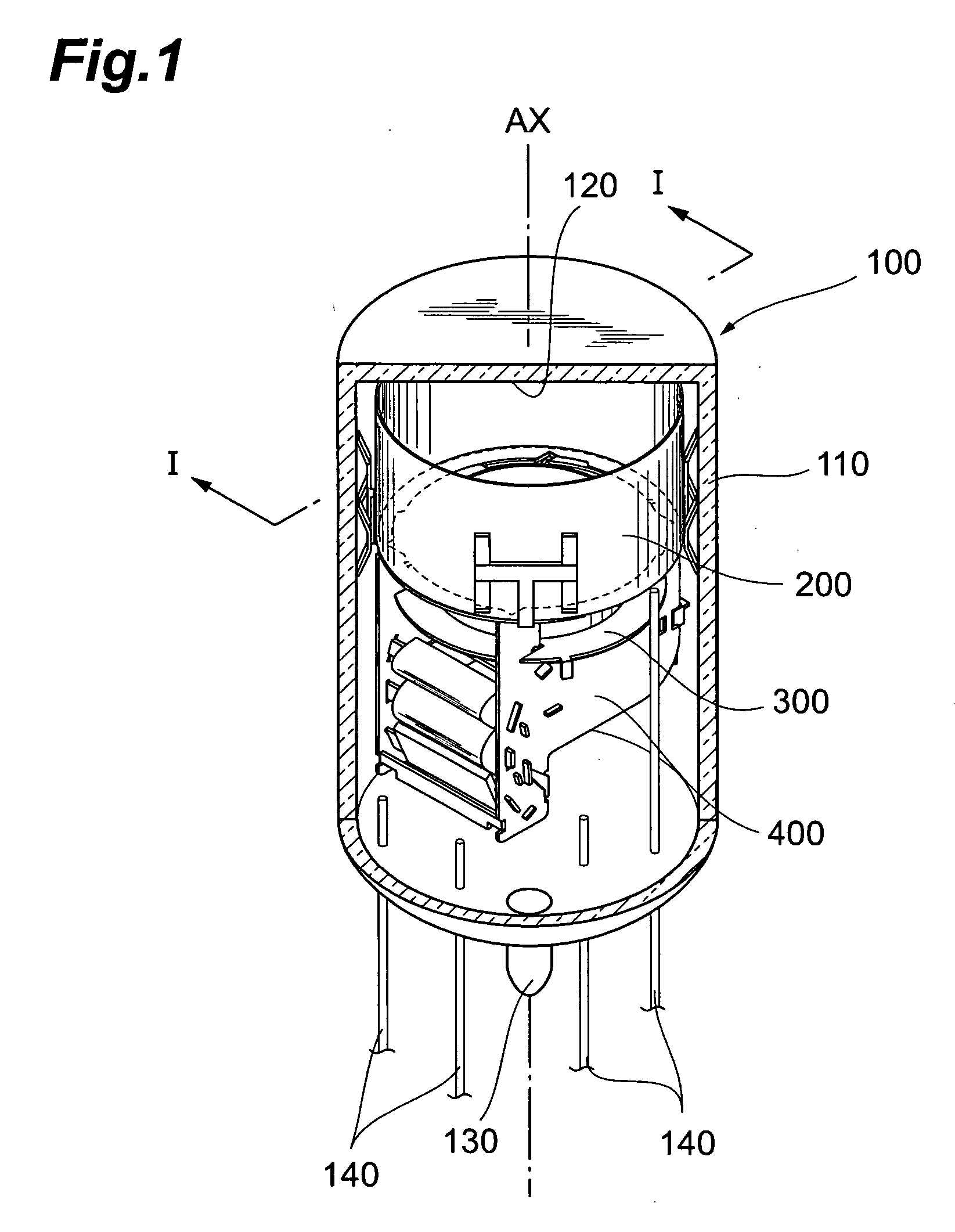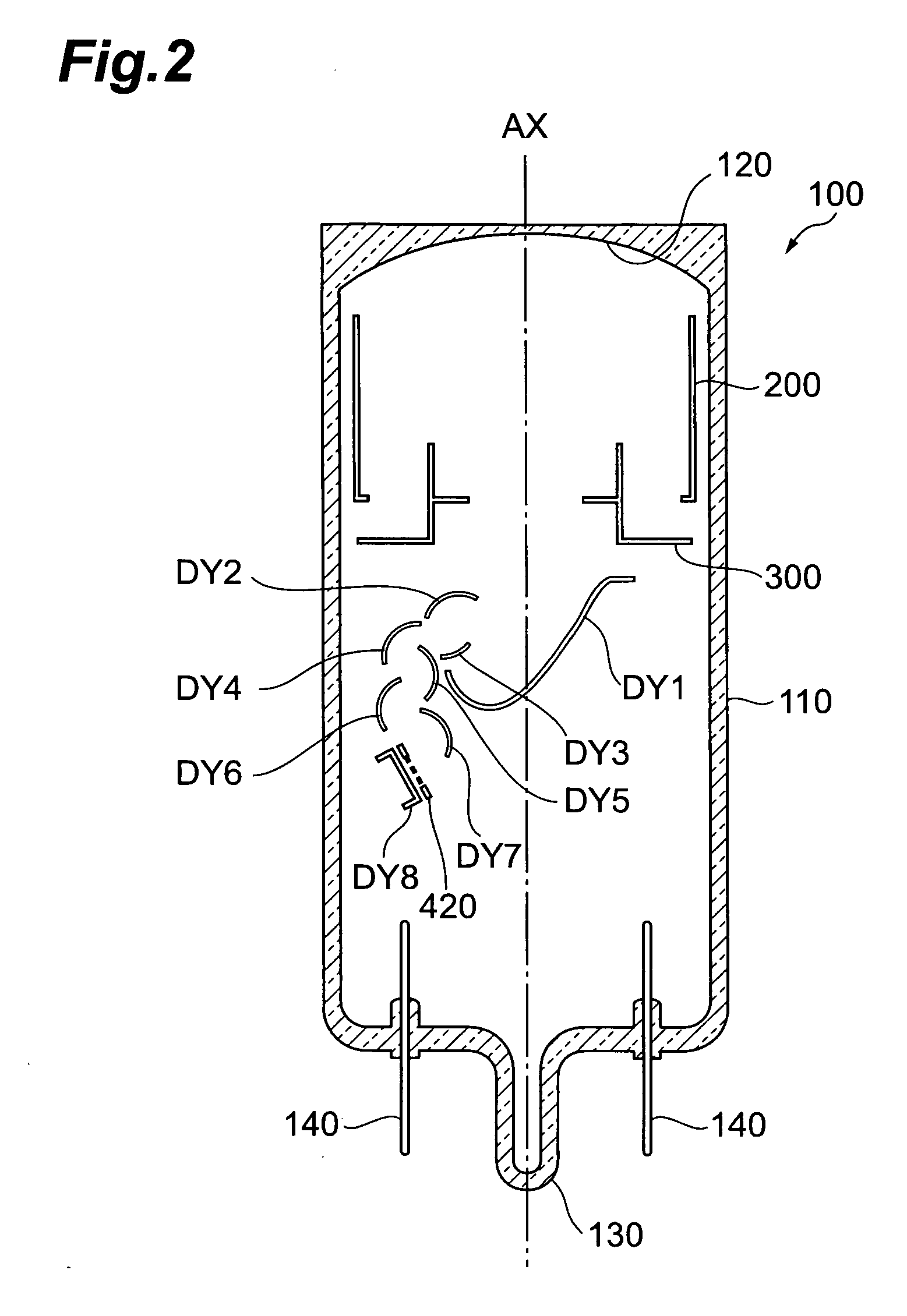Photomultiplier
- Summary
- Abstract
- Description
- Claims
- Application Information
AI Technical Summary
Benefits of technology
Problems solved by technology
Method used
Image
Examples
first embodiment
[0041]FIG. 2 is a view illustrating a cross-sectional structure of the photomultiplier taken along the line I-I depicted in FIG. 1.
[0042] In the photomultiplier 100 according to the first embodiment, the electron-multiplying unit 400 housed in the sealed container 110, as shown in FIG. 2, is unitedly held by a pair of insulating support members together with the focusing electrode 200 and accelerating electrode 300. In particular, associated with the accelerating electrode 300, the pair of insulating support members hold unitedly a first dynode (first-stage dynode) DY1 to a seventh dynode DY7, an anode 420, and a reflection-type of dynode DY8 for reversing the electrons passed through the anode 420 toward the anode 420 again.
[0043] Thus, in a state that at least the first dynode DY1 and second dynode DY2 contained in the dynode unit 400 is directly opposite to the accelerating electrode 300 without going through the conductive member, the photomultiplier 100 has a structure holdin...
second embodiment
[0072] For example, FIG. 14A is a view illustrating a sectional structure of the photomultiplier according to the present invention; FIG. 14B is a view illustrating a sectional structure of the application thereof.
[0073] In accordance with to the photomultiplier according to the second embodiment illustrated in FIG. 14A, similarly to a conventional photomultiplier, the first dynode DY1 contained in the dynode unit is supported directly between the accelerating electrode 300 and dynode unit, and a metal disk D2 set to the same potential as that of the first dynode DY1 is arranged therebetween. However, in the photomultiplier according to the second embodiment, the metal disk D2 has a through hole D2a to be passed through by the photoelectrons from the cathode 120; the shortest distance from the tube axis of the sealed container 110 to the edge of the through hole D2a is set to 1.3 times or more the shortest distance from the tube axis of the sealed container 110 to the end portion of...
PUM
 Login to View More
Login to View More Abstract
Description
Claims
Application Information
 Login to View More
Login to View More - R&D Engineer
- R&D Manager
- IP Professional
- Industry Leading Data Capabilities
- Powerful AI technology
- Patent DNA Extraction
Browse by: Latest US Patents, China's latest patents, Technical Efficacy Thesaurus, Application Domain, Technology Topic, Popular Technical Reports.
© 2024 PatSnap. All rights reserved.Legal|Privacy policy|Modern Slavery Act Transparency Statement|Sitemap|About US| Contact US: help@patsnap.com










